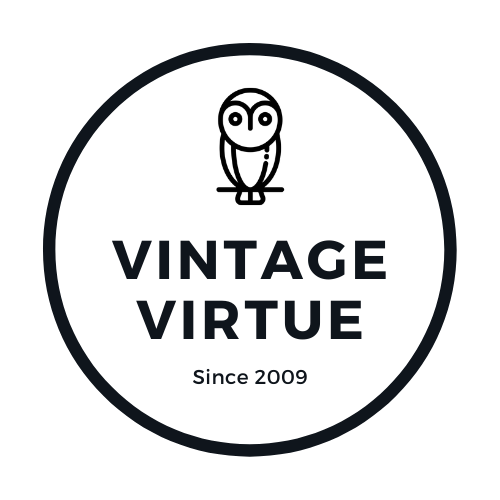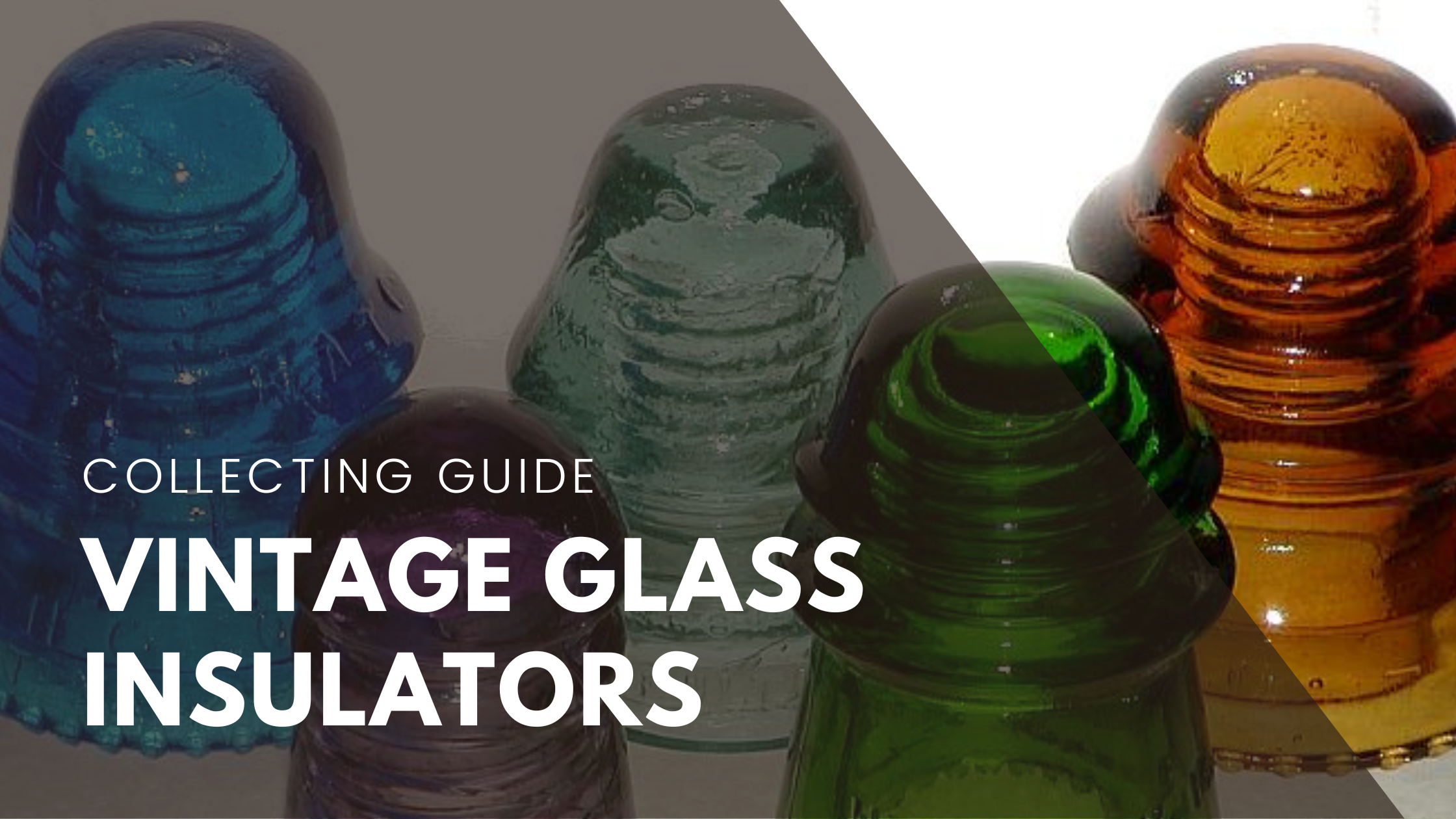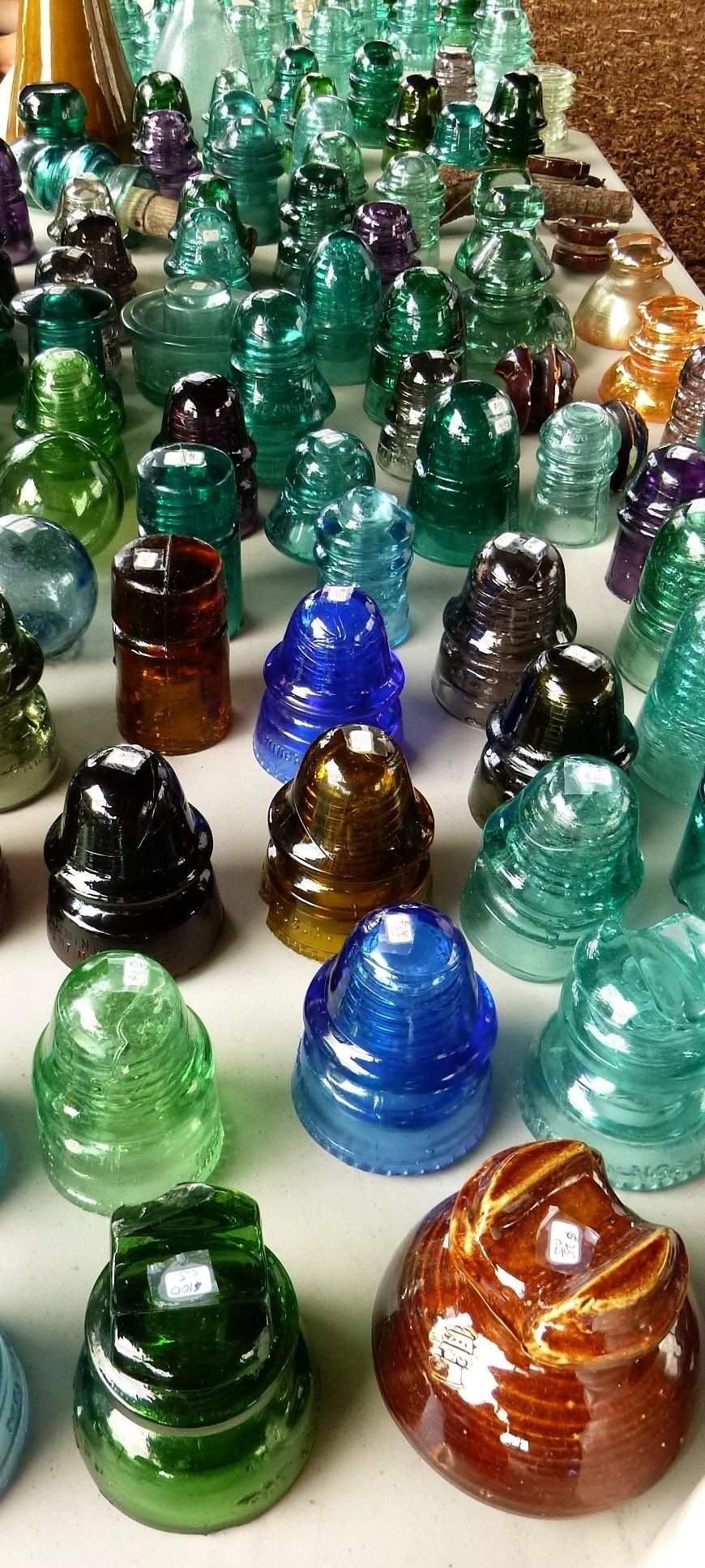Collecting Vintage Glass Insulators: From Telegraph to Telephone
Glass insulators were primarily used in the late 19th and early 20th centuries to insulate and protect telegraph and telephone wires. They were mounted on wooden or metal poles to prevent the wires from coming into contact with the poles and the ground, ensuring the efficient transmission of electrical signals.
Since the mid-1960s, collecting glass insulators has become popular among enthusiasts who appreciate their unique designs, historical significance, and nostalgic charm. here are a few things to know about collecting glass insulators:
Insulator Glass Colors
Both glass and porcelain insulators have been used since the early days of the telegraph. Still, glass insulators were less expensive than porcelain and generally used for lower-voltage applications. The oldest glass insulators date from about 1846.
The period from 1875 to 1930 might generally be considered the "heyday" of the glass insulator. Hundreds of millions of these glass "bells" were produced by many glasshouses located primarily in the East and Midwest, with a few plants in California and Colorado. Many glasshouses that made insulators also made bottles, fruit jars, and other glassware.
Insulators were commonly made from affordable "bottle glass" or "green glass" that had a shade of aqua. However, other color shades were also available. Clear glass was more frequently used after 1935. Over the years, numerous styles were developed, and insulators could be found with many markings, such as embossed names, initials, and patent dates.
Common Insulator Styles
Glass insulators came in a few primary forms depending on their specific electrical application. “Pony” insulators, often no more than 3 1/2 inches in height, were used for lower voltage lines. In contrast, “Power” insulators for high-voltage purposes were much larger, sometimes weighing more than 30 pounds. The most common style is the “Signal” variety for communication and secondary power lines. High-voltage “Cable” insulators, distinguished by their U-shape, accommodate thick cable placement. Whereas “Exchange” insulators were designed with multiple grooves to allow a primary line to pass through it and secondary branches to direct wire toward other locations.
CD Numbers
Collectors classify all glass pin-type insulators in the "CD Numbering" identification system. This system was created and used by N.R. "Woody" Woodward, an early pioneer, researcher, and author in collecting glass insulators. The CD (Consolidated Design) numbers identify insulators by their shape and profile, regardless of exact embossed markings, glass color, or base type.
The CD 154 is the identification number given to the most common type of glass insulator, the HEMINGRAY-42. This is the type that most people are likely to come across. Although other glass companies also manufacture similar models, their versions may differ, such as raised markings, color, and base types (smooth base, sharp drip points, or round drip points). Nonetheless, all of them would fall under the category of CD 154s.
Here are a few other typically seen insulators:
Hemingray NO. 9 is a CD 106.
Hemingray-10 is a CD 115.
Hemingray-12 is a CD 113.
Armstrong DP 1 is a CD 155.
Hemingray-45 is also a CD 155.
Kerr T.S. is a CD 129.
Dating a vintage glass insulator is a straightforward thing to do using the CD identification system. These numbers describe the insulator’s shape and profile.
Examples include:
CDs 100-144 Have a side wire groove and no inner skirts.
CDs 145-184 have side wire grooves and one inner skirt.
CDs 185-188 are through pinhole styles.
CDs 185-205 are Transposition styles.
CDs 206-249 are saddle groove styles with an inner skirt.
CDs 250-279 are cable-style insulators.
CD numbers are helpful ways of groping glass insulators together into categories. But it’s important to note that they leave out specifics like embossing, markings, base styles, and color
Insulator collectors who are part of the "organized hobby" of insulator collecting commonly use CD numbers to communicate with each other. These CD numbers are often used in eBay auctions. However, people unfamiliar with the hobby may list insulators on eBay or other internet sales sites without using the CD number system. Several insulator websites discuss this classification system in more detail.
Condition
Earlier insulators had bubbles, streaking, “snow,” surface creases, and other marks of crudeness, which was typical for this type of glass because quality standards were not as high as tableware. As long as the insulator performed its duty adequately, the color and minor imperfections in the glass were of little concern. These “marks of crudeness and age” now add to their value and charm to collectors of antique insulators.
Markings and Value
Most glass insulators have embossings that include company names, brands, trademarks, model numbers, patent dates, and more. However, there are a small number of insulators that are unmarked. It may be surprising, but many insulators have been carefully and painstakingly marked with lettering that the average person below does not discern. These markings are only visible to linemen.
Glass pin-type insulators are common and usually only have a nominal value of around 50 cents to a dollar. Some well-known types include Hemingray-42, Hemingray-45, and Whitall Tatum No. 1. However, slight variations in color, embossed markings, or base type can significantly affect the market value of a specific piece for experienced collectors. Some insulators are worth between 1 and 5 dollars, while others are worth hundreds. Some of the rarest insulators, often one of a kind, can be worth thousands or even tens of thousands of dollars.
Again, it depends on a combination of characteristics, including degree of scarcity, condition, demand, age, shade of color, attractiveness, and other factors. Damaged insulators, speaking strictly of monetary value, in most cases, are worth only a tiny percent of the value of an otherwise identical “Very near mint” (VNM) piece. Insulators placed for sale in retail outlets such as antique malls and flea markets will, by necessity, usually be priced higher simply because of factors such as overhead – sellers typically have to pay steep booth rental fees in such places as antique malls.
The most commonly used glass insulator price guide (used by most insulator collectors) has been published in several editions, first by John & Carol McDougald and in more recent years by Don Briel.
Cleaning, Display, and Storage
To clean insulators, you can make a paste by mixing baking soda with water and, using a toothbrush, scrub the paste into the crevices of the insulator. There are two types of insulators: threaded and unthreaded. Threaded insulators may have wood residue where the insulator sits on a post. In contrast, unthreaded insulators may have a putty or glue that held them on the post. You can use the toothbrush and baking soda to remove whatever residue you can without damaging the glass.
Oxalic acid cleaners like Zud and Barkeeper's Friend can also be used and are available at your local grocery store. You can make a paste with oxalic acid and water and apply it on the glass insulator where there is a rust stain. Let it sit for a minute or two, then use a toothbrush to scrub it. Rinse the insulator with water and dry it.
You can use white vinegar to remove water residue and accumulation from years of weathering on the pole or lying in a field. Pour white vinegar into a deep bowl and soak the insulator overnight. The next day, use the toothbrush to brush its teeth and threads. Rinse the insulator with clear water to remove the vinegar.
Consider using specially designed display stands or shelves to showcase your glass insulator collection. Some collectors prefer grouping them by color, style, or manufacturer, while others opt for a more eclectic arrangement. When storing, ensure they are protected from accidental breakage using appropriate padding or individual containers.
Sourcing Insulators
Insulators can be found in various ways. Antique shops, flea markets, online auctions, and specialized insulator shows are great places to start. Rare antique and vintage glass insulators are widely available on eBay. The platform enables you to review the list of glass insulators for sale, check their many details, and find additional images of the ones that interest you.
Auction houses are a great place to buy untampered antique glass insulators. Some well-known auction houses include Bill and Jill Insulators, Manifest Auctions, and Hanford Auction House.
Connecting with other collectors through clubs, associations, or social media platforms can also provide valuable information, trading opportunities, and a sense of community
Remember, collecting glass insulators can be a fascinating journey into the history of communication and electrical systems. Enjoy discovering unique pieces, learning about their stories, and connecting with fellow collectors.



